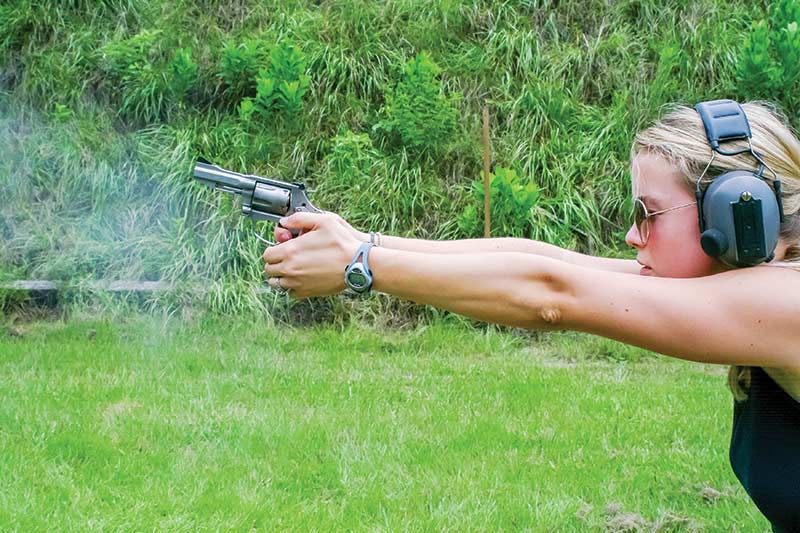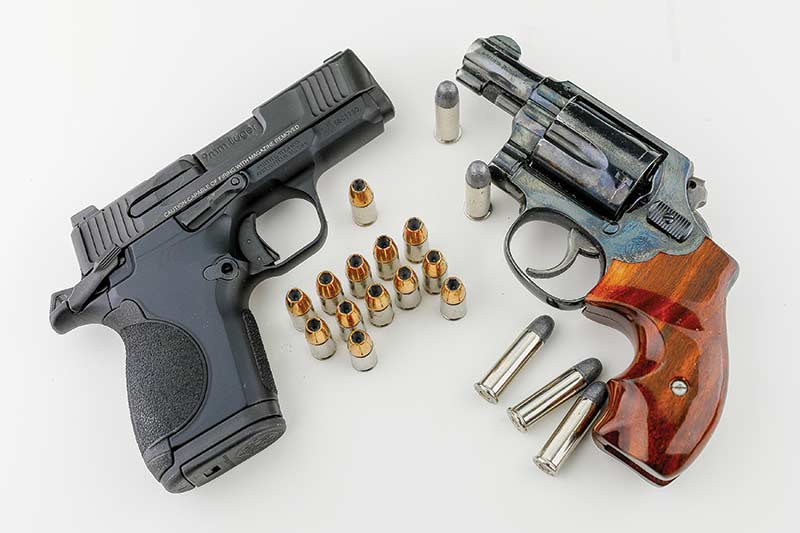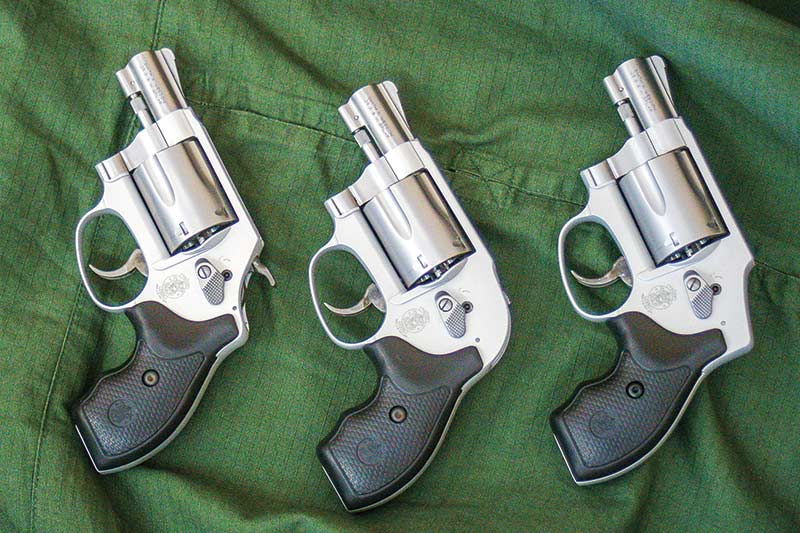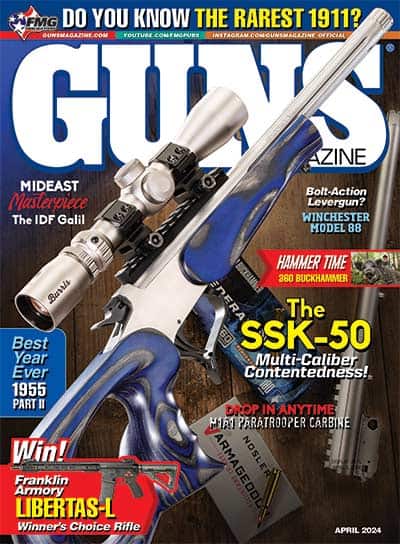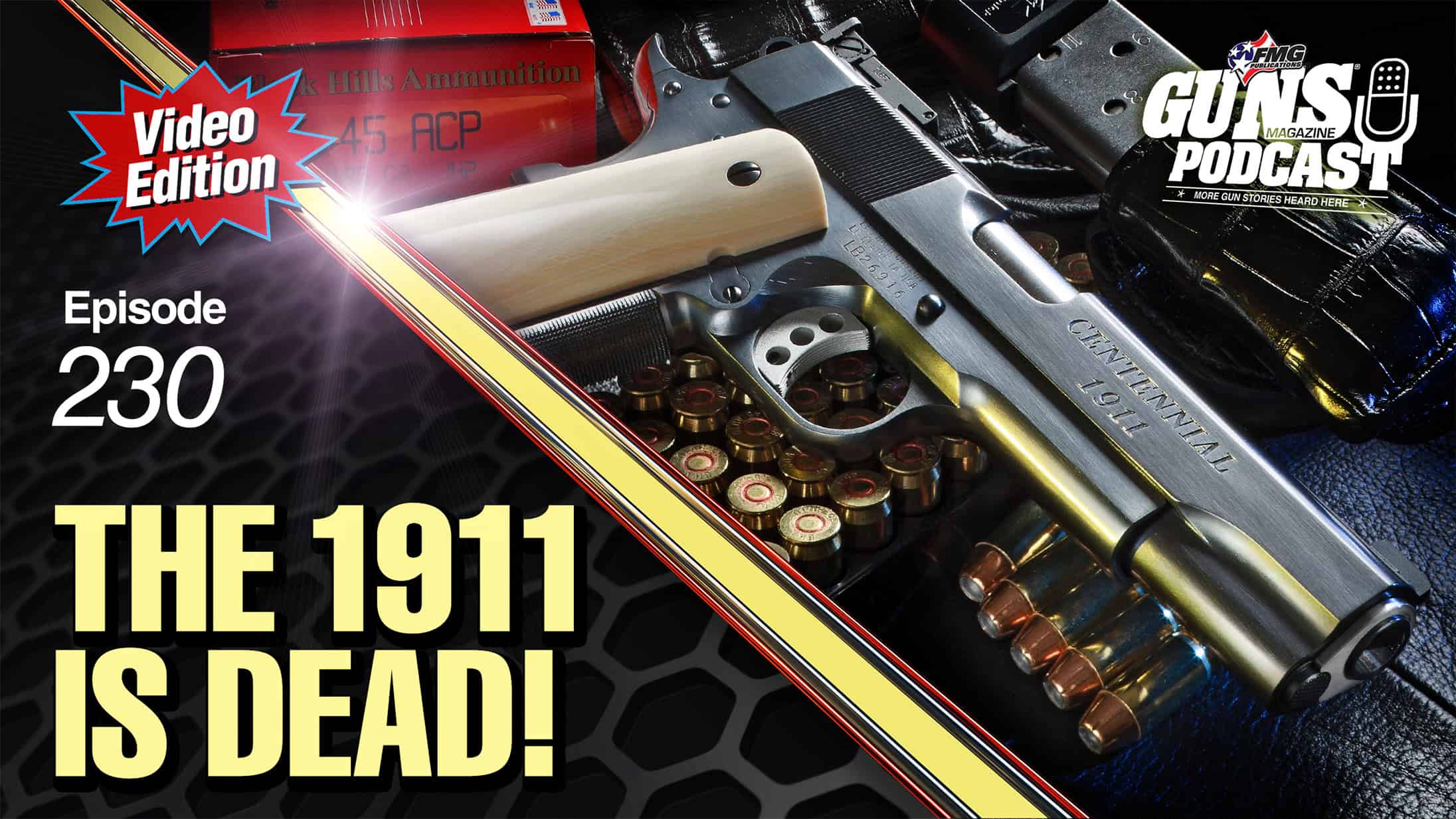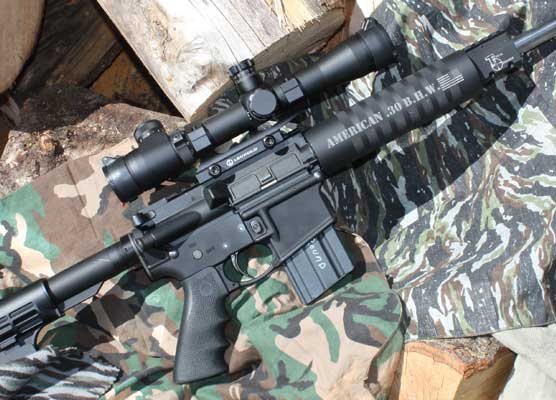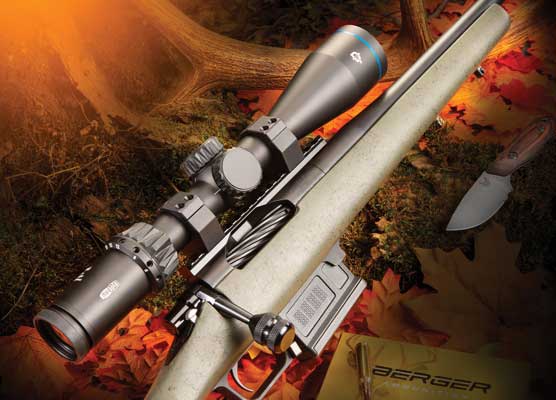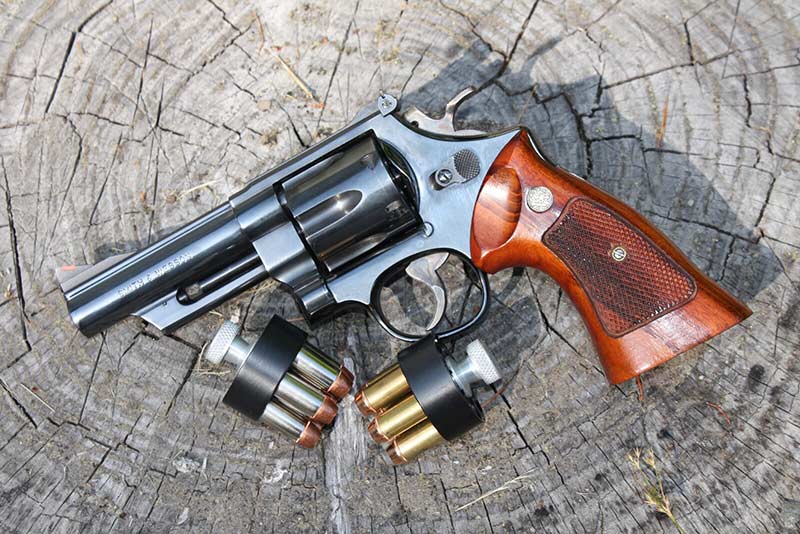The Enduring Smith & Wesson
Chief Special
Why Change A Good Thing?
The snub-nose revolver had been a staple of concealed carry since the 19th century. Colt conceptualized the 2″ barrel small-frame .38 Colt Detective Special in 1926 and had it on gun dealers’ shelves by 1927, and it dominated its market niche for nearly a quarter century thereafter until arch-competitor Smith & Wesson’s savvy president Carl Hellstrom decided to do something about that.
New Arrival
Before 1950, S&W’s only products in the snub-nose .38 Special market were the short barrel version of their K-Frame Military & Police service revolver later dubbed the Model 10 and the little I-Frame (.32-frame) Terrier, which held five rounds of the stubby .38 S&W round. The market perceived the short M&P as not only bigger than Colt’s six-shot Detective Special but about a quarter pound heavier, too bulky for pocket or ankle carry for most buyers’ tastes while the Terrier was just too feeble with its anemic little .38 S&W round.
Hellstrom fixed this in 1950. At a convention of IACP, the International Association of Chiefs of Police, he introduced a new revolver: an I-Frame stretched to accommodate a cylinder holding five rounds of .38 Special, slightly smaller than the Colt offering and a couple of ounces lighter. They held a contest for the IACP people to name the gun. We should not be surprised they named it after their job. It has been known ever since as the Chief Special, occasionally spelled “Chief’s Special” or “Chiefs Special.”
In the late ’50s, when S&W went to numerical designations, it got additional names: Model 36 for all chrome-molybdenum ordnance steel whether finished in blue or stainless; Model 37 if it had the aluminum Airweight frame; and the Model 60, added when they came out in stainless steel, the first revolver to be so constructed.
Variations
S&W continued to chase Colt. In 1950 when the Chief came out, Colt introduced the first lightweight aluminum frame revolver, the Cobra, which was simply a Detective Special 5.5 oz. lighter. In a few years, S&W countered with the similarly constructed Chief Special Airweight. The year 1950 had also seen Colt’s introduction of their bolt-on hammer shroud, which required three screw holes to be drilled in the frame. A few years later, S&W one-upped them with the Bodyguard, a Chief with an integral hammer shroud.
Such guns, of either brand, could still be thumb-cocked with the stubby hammer-tip protruding from the shroud. Between those years, in 1952, the Smith folks reached into their own history and, at the instigation of the great gun expert Rex Applegate, applied the completely enclosed hammer design of their less powerful Safety Hammerless top-break revolver of 1887 (discontinued in 1940) to the Chief Special and created the Centennial .38 Special series, which seems to be the best-selling of the J-Frame Smiths today.
Along the way, barrels grew to three inches. NYPD encouraged these: Frank McGee, the legendary instructor who took over the Firearms Training Unit and made it the Firearms and Tactics Unit, advised off-duty officers to carry this variation and packed one himself. To this day, many Chief aficionados consider it the gun of choice for belt carry as opposed to pocket or ankle, but the 2″ barrel (actually, one and seven-eighths inches) has always been the most popular.
I have one of the few 5″-barrel Model 60s made. It’s a sweet shooter, but it never caught on because its length was antithetical to most forms of concealed carry. In a similar vein, a few — now collectible — Chief Special Target versions were made with adjustable sights and they never caught on either.
Pick A Side
S&W versus Colt was one of the great “brand wars,” analogous to “Coke vs. Pepsi” and “Ford vs. Chevrolet.” The short, round butt of the original Chief was always the most popular, but S&W noticed some serious shooters preferred the longer grip-frame of the Colt Detective Special and Cobra for more “shootability,” and countered by introducing the optional longer grip-frame they called the “semi-square butt.”
NYPD thought this was so much better that if one of their officers wanted to buy a Chief for backup or off-duty at the deep discount, buying it through the department, they could only buy the semi-square-butt version. If they wanted the more concealable round butt, they had to pay retail at a gun shop or police equipment store.
The reverse was also true in the brand war. Noticing the Chief was outselling them with its more concealable short/round butt frame, Colt in 1955 introduced the Agent, a short-butt Cobra.
In the end, S&W won that brand war. Their product undersold the Colt equivalents, had a nicer finish and was just enough smaller to be a “deal-maker” for concealed carry. Also, not to mention its smoother one-stage double-action trigger pull vis-à-vis the two-stage pull of the Colts of the time. Smith & Wesson recognized the power of the Chief Special name enough to produce subcompact pistols in their now-long-gone Gen 3 series of autoloaders called the “Chief Special,” and to resurrect the name again for their latest subcompact 9mm: The “CS” in “CSX” does in fact stand for “Chief Special.”
The Chief Special revolver remains available from Smith & Wesson to this very day, in .38 Special and thanks to modern metallurgy, in .357 Magnum. There are good reasons why it has lasted so long.
